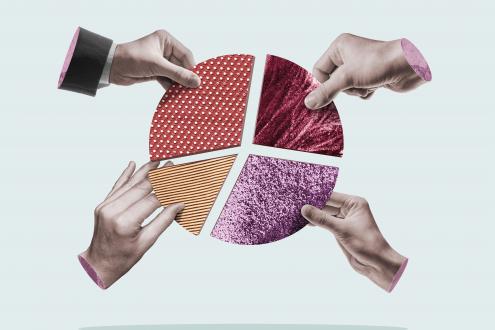Wealth Solutions & Wealth Planning
The Art of Acquisition: Navigating the Intricate World of Art for India's HNWIs

Roshnek Dhalla of Khaitan & Co
Oct 19, 2023
Hubbis recently had the opportunity of connecting with Roshnek Dhalla, Counsel in the Corporate and Commercial Practice Group in the Mumbai office of Khaitan & Co. is an expert on the world of art acquisition, with her experience lying in assisting India’s High Net Worth Individuals (HNWIs) navigate this complex landscape. The art world, with its allure and grandeur, is not devoid of intricate challenges, particularly for Indian buyers seeking international pieces. In this piece, Roshnek shines a light on the key considerations India’s HNWs should be making when it comes to the world of art and art investing, and the multifaceted challenges that can arise when pursuing their dream piece.
Know Your Art: A Whistlestop Tour of the Things to Know before Venturing Into the Indian Art Scene
Over the past decade, the art industry has undergone a remarkable transformation. What once were mere decorative pieces, like wall hangings, have now evolved into an "alternative asset class" for investors. Roshnek provides a concise overview of the burgeoning art landscape in India, equipping prospective buyers with the knowledge they need to truly 'know their art'.
The most crucial steps while purchasing art is to ensure that the title to the work is clear. And in turn, that the artwork is not stolen property or a fake. Often buyers rely on the provenance of the face value without validating the title. “Due to such practices, there has been a stark rise in cases of forged provenance, especially the sale of fraudulent and illegally traded art,” reports Roshnek. It’s important to take correct legal advice while buying art specially if you are purchasing art of a significant value. Identifying gaps in the title and creating a robust title chain is important.
Turning her attention to those points of interest to keen investors, Roshnek says that the India government is now allowing remittances aboard under the Liberalized Remittance Scheme for purchase of art works, we see cross border sales gaining significant momentum. More and more collectors are purchasing art abroad and sending it back to India. A few things to remember, most of the countries abroad levy ~ 20% VAT on export of art. For instance, France, in addition to VAT imposes a 6% tax on export of art. UK on the other hand does not charge any custom duty while exporting art to India. The artwork will also be subject to customs duty in India ranging from 10 to 12%.
In terms of sale of art works, one must remember that the definition of capital asset under the Income Tax Act includes “works of art”. Therefore, depending on the period of holding of the artwork, capital gains tax will be applicable when the art is sold.
Another interesting point of note, says Roshnek, is that when you buy a painting, you must remember that you own ONLY the painting. You do not own the intangible right that is imbedded in the painting. Intangible rights of copyright, she explains, remain vested in the artist. Or when the artist dies, in the estate of the artist. Such a right can only be transferred by a signed writing, and they are virtually never transferred when you buy a work of art.
Lastly, Roshnek encourages collectors to review their collection, and ensure that it does not have any paintings that have crossed 100 years old, or that are nearing the centenary for their creation. This is because such paintings would fall within the definition of “antiquities”, and therefore may need registration with the government.
Having set the scene, Roshnek then delved deeper into what the appeal of art is for India’s HNWIs, providing valuable insights tailored to helping India’s High Net Worth art enthusiasts navigate the intricate challenges they may encounter on their journey to transition from observer to collector.
What challenges and regulatory obstacles were highlighted for Indian art buyers when acquiring pieces from international markets?
The Indian art market has changed beyond recognition over the past 10 years. As globalization progresses and the purchasing power of individuals increases, there is a growing trend to collect of art and antiques from different parts of the world. Bring art into India presents certain challenges which buyers need to be well-versed with especially regulations around provenance, shipping, insurance, taxation, as well as international guidelines.
What are the important factors that come to mind that Indian art collectors should consider in terms of taxation when acquiring art pieces from abroad?
In 2007, definition of capital asset was amended under the Income Tax Act was amended to include “works of art”. As a result, sale of artwork would be a taxable event and the gains from the slae will attract tax either as short-term capital gains or long-term capital gains. If the work was held for less than 36 months, it would be taxed as a short-term gain and if the work is held for more than 36 months, it will be classified as a long-term gain. Additionally, any transfer of the artwork to a Government or university or museum is exempt from such capital gains. The earnings by renting artworks and reprinting for display are also taxable at slab rates.
How are artworks like paintings, sculptures, and antiques taxed in India under the HSN code commodity tariff schedule, and how does this influence the cost of international art acquisitions? Additionally, in light of rising fraudulent art sales, what due diligence practices should collectors implement to ensure authenticity and mitigate risks?
In India, artworks such as paintings, sculptures and antiquities are taxed at 12% under the HSN code commodity tariff schedule.
Furthermore, regardless of where you are buying art, authenticity should always be questioned. Art should always be accompanied by documentation. There are several ways of verifying provenance. If you are buying directly from the artist, a signed certificate from the artist should suffice. Get as much information as possible from the seller of the art, if this is a primary sale. However if this is a secondary sale, you need to do your own due diligence; get the art verified from an art expert or a historian., you can also check the catalogue raisonné to see if the art you are buying is published or is likely to be published; you can also look at the publication and the history of the artwork to see if other people have also deemed the artwork to be authentic.
Could you provide guidance on the key considerations for art insurance and the specific coverage collectors should opt for when acquiring art internationally?
Renew and assess the ownership structure of the collection, get a valuation of the collection. Insurance policy is assessed based on the valuation and the risk appetite while moving the work internationally. Usually the following losses will be excluded from international coverage which one should be mindful about: gradual deterioration due to humidity, exposure to light, extreme temperate, damage, loss due to war, terrorism and consequential losses.
What actions have been taken by Indian authorities to safeguard cultural rights and how have these changes impacted the art and antiquities market in India?
In recent times the government of India has been proactive in bringing back from abroad antiquities that were wrongfully taken from India. For an Indian art collector abroad holding ancient Indian antiquities with a pre-1970 provenance, the Government of India has the authority to seize the collection if it is tainted with claims of illicit export. In this regard, India as a ratifying party implemented the Antiquities and Art Treasures Act 1972 (Antiquities Act). Under the Antiquities Act, export of antiquities by private persons is completely prohibited. Only the government and its authorized agencies are permitted to export antiquities from India. Like India, other countries have also implemented local legislation and empowered their customs authorities to seize and return illicit artifacts. Lastly, seeing the desire to remedy past wrongs and to bring back what belongs rightfully to India, we can expect to see a further rise in repatriation of antiquities.
More about Roshnek Dhalla
Roshnek Dhalla is a Counsel in the Corporate and Commercial Practice Group in the Mumbai office. She is a qualified Solicitor with over 14 years of experience.
Roshnek specialises in corporate advisory with specific focus on company laws, exchange control, e-commerce, information technology, mergers and acquisitions, joint ventures, corporate restructuring, regulatory and general corporate law advisory. She has advised several international and national clients across a wide range of sectors including news and media, information technology, defence, construction, infrastructure, financial services, pharmaceuticals, and manufacturing.
In the art and antiquities space, Roshnek regularly advises auction houses, museums, galleries, artists, art collectors on a range of legal issues that arise concerning the domestic and global markets for art and antiquities.






